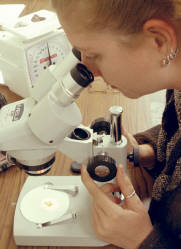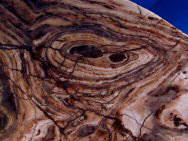
Best Website for Herkimer Diamond Information
Last Updated:

About this Webpage:


Free Website Where Herkimer Diamond Enthusiasts Share Information with the Public
Scroll down
Dr.C. did two talks at the Herkimer Diamond Festival (July)which are in a Youtube movie. The research on the Herkimer District is in need of samples and photos.
How can you help? Visit the "how to help" page.

Any theory used to explain the origin of Herkimer diamond (Herkimer History) needs to have science to back up that theory. The details of this science have been assembled here, and the links to the oil and seed crystal theory are presented. The information is complex, and links to even more complex supportive documents are provided.
If you seek an easy to understand overview please click on Explanation at the top of the page. The infromation below follows along the timeline presented on that explanation page, from oldest to youngest.



Snowball Earth - 600 million years past

Cambrian Earth - 500 million years past

Complex Scientific Information is Here
There are many different things we can say about geologic history just prior to the upper Cambrian (Herkimer host rock time), but one of the most important would be that almost all life perished. This then left little competition for the stromatolites that followed in the Cambrian. It is also likely that there were some changes to water chemistry due to distant, but massive volcanic eruptions and the effect of the massive glaciers. The Earth may have been scraped bare (leaving behind glacial erosional features) followed by acid rain (due to the volcanos) poured on this barren rock. This is a process that may have been happening at the start of the Cambrian, which is a little before the time of the Herkimer host rock. This would have lead to rapid erosion and a density of available chemicals in the water that would have been different than today.

Early Dolomite - the great debate
The Cambrian was a unique time in Earth's history. There was a stromatolite bloom (very extensive growth) followed by the arrival of a wide diversity of creatures unknown to us today (see info on the Burgess Shale). But what was likely the most important in terms of the Herkimer diamond deposits was that conditions were just right for making a rock that would be porous enough (had holes and cracks) for mineral bearing fluids to move through some time after the rock was made. This is the significance of the shallow sea, the carbonate platform (with porous limestone), the later karst (cave like processes) events, and the later fault and fracture events (there is evidence that some of this faulting was happening in the Cambrian). They all combine to make a unique set of conditions to help prepare the region (district) for Herkimer deposits.

Dolomite is an ever present mineral in the Herkimer diamond deposits. It is also the first mineral to crystalize in the vugs and pockets. The Herkimer host rock is called the Little Falls dolostone - a stone made of mostly dolomite. Dolostone was originally limestone and then the calcite in the limestone was changed to dolomite with the addition of magnesium. There is a scientific debate about how dolomite is formed and basically there are two sides to the argument: 1) the fluids that made the dolomite were there with the burial of the rocks, and 2) the fluids were introduced later along faults and rock layers with good porosity (lots of holes/cracks). There is evidence in the Herkimer district that there were at least two dolomite episodes - see the dolomite page.

What about all that black stuff?
Probably the most important point to consider here is that the Herkimer host rock environment, at the time is was being formed, was probably not conducive to preserving organic carbon. Most of the carbon was used in making carbonate (limestone) and feeding other animals (there may have been worms and other burrowing animals). Then if there was any organic material left after that it was likely washed out to sea, due to the fact that the Herkimer host rocks were formed quite close to land with both river and beach activity. There could haven been isolated areas of original carbon preservation but they would have been small.
A 1953 article presents an argument
Another point to consider is the actual form that microbial mats (stromatolite layers) take. They sort of look like tree rings (photo right). This is not the form that the "black carbon" takes in the Herkimer district. See the hydrocarbon page for a discussion.

Cambrian Earth - Saving original carbon???

Cambrian Earth - Stromatolites, partners for Herkimers
There is a stromatolite layer associated with most if not all of the Herkimer Deposits. It is likely that during this late time in the Cambrian, and this close to land, the stromatolites were becoming what are called the "framework" type. If that is true then the rock they helped to make the Herkimer host rock have a greater porosity and may have even had visible open spaces. This increased porosity helped to make room for several events of fluid flow through the rock and helped in the formation of Herkimer diamond deposits. In this sense stromatolites are partners for the making of Herkimer diamonds.

Late Cambrian/Early Ordovician Earth - Uplifts, erosion, karst
There appears to be evidence that dramatic sea level changes took place, several times, during the time the Herkimer host rocks were being formed and directly after. This would have significant effects on the host rocks , first in creating interlayered sand deposits and secondly in creating creating solution openings and collapse breccias (weathered broken rock as fragments), both are evident in Herkimer deposits, and in other similar Cambrian rocks in the Eastern USA. Both of these events (sand layers and solution openings) helped to increase the porosity of the rock and aid in helping fluids to flow through. This increased porosity helped to make room for the formation of the Herkimer diamond deposits, and in some instances quite large openings that could be filled with crystals.
Above is an interesting article that looks at the distribution of fossils in rocks that are of similar age to the Herkimer host rocks across a broad region. An important part of the paper speaks of an "unconformity" over the Herkimer host rocks. This a discontinous gap between rock layers indicating that the Herkimer host rocks were exposed to weathering and erosion AND that this was an event specific to certain areas (all of the Herkimer region) and not found in other areas. What happened at that time was that the Herkimer host rock was exposed to the surface and a karst environment was formed. It is a time when the limestone was having small "vugs" made in it, as well as other weathering and infilling features. That changed the Herkimer host rocks making them even more open (porous) to fluid movement and ready to host the Herkimer diamonds..
The Herkimer host rock was formed in what is called a peritidal region and may have had sabkha features. This environment may have had a different chemistry back then. We don't know, but the hypersalitiy associated with a sabkha could have remained as interstital pore fluid (affecting the mineral making processes). It is also a tough environment for preserving broad mats of carbon material, and not likely to have happened in the Herkimer district.

The above study was done in the Little Falls area looking at faults and associated fault networks and the distribution of dolomitization (how much of the limestone was turned into dolomite). What was found was that mineralization was connected to "all fracture sets host veins except N-striking ones" (see the above paper). The research also showed that there were several episodes of mineralization (similar to our crystal field evidence, click on Other Minerals link at the top of the page) and that there was a similarity to observations in nearby gas deposits, see below). The above study did show that were mineraization events occuring at different times, some earlier than others. Perhaps there was also a change in the fluid chemistry at different times that helped contribute to different mineral episodes.

Can't call it all Anthraxolite - its hydrocarbon


The idea that oil was present in the Herkimer host rock has been around at least since the 1950's. It just never was linked to the making of Herkimer diamonds. It is highly likely that the two were very much linked together. The oil being present in some form before the Herkimer diamonds grew, and the oil affected the growth of the Herkimer diamonds (see both the hydrocabon page and the sphere page).
In the late 1990's structurally controlled gas deposits (article below), within a dolomite altered rock, were found in the Finger Lakes area. The appearance of these may speak to processes that were similar to those happening in the Herkimer district - minus the quartz.
In the above information it has been illustrated (and supported by field evidence) that the migration of oil was important to the formation of Herkimer diamonds and other features that are found within the Herkimer district. But there has been little study on the ENTIRE district as a "fossilized oil field". What is possible at this point is to draw comparisons to other areas.
The gas deposits in the Finger Lakes region of NY are hosted in rocks very similar to the Herkimer host rocks. The study done at Palatine Bridge (see papers below), which is within the Herkimer region, suggests a similarity between the fault related mineralization found there and the mineralization associated with the gas deposits. This is supportive evidence suggestive (along with the presence of "anthraxolite") that petroleum bearing fluids moved through these Herkimer host rocks rocks after they were fractured by faults. The petroleum bearing fluids are directly linked to the formation of Herkimer diamonds (along with all the conditions that created dramatic increases in porosity). Additional studies in both the gas deposits and in the Herkimer district may help scientists to understand both.
The paper above is an important piece of research that indicates mineralization episodes occurred before and after the Herkimer diamonds. This is similar to the field evidence in the Herkimer deposits (see minerals link at the top of the page). In addition the researchers suggest that the Herkimer diamonds and the formation of anthraxolite are linked to hotter fluids that followed the petroleum fluids. These hotter fluids were about 200 degrees C. In the next section on quartz growth we will see the importance of this temperature. In addition these are fluids which came into the host rock considerably after the rocks were formed, perhaps as young as Permian (290 million years old). This younger date is similar to other mineral deposits in the Applachians and similar to mineralization in Cambrian rocks elsewhere in the USA (scroll down to see supporting information).

Hydrocarbon and clear Herkimer diamonds
There is strong field evidence that there is a link between pockets packed with hydrocarbon and very clear Herkimer diamonds (see photos on the hydrocarbon page). Any theory seeking to explain how Herkimer diamonds were formed must address this unmistakable relationship.
There is research to suggest that quartz crystalization, at temperatures around 250 degrees C (close to the temerature established in the anthraxolite research above), is stablized in the presence of hydrocarbon fluids. Rapid fluctuations in the quartz saturation of the solution (how much quartz is disolved in solution) would normally change crystal growth rates, but with the hydrocarbons present the growth rates remain constant across changes in solution concentrations (see field evidence discussion below regarding evidence of this in the Herkimer district). What this means is that crystals can grow at a smooth and constant rate and will have less imperfections and the crystals formed are more likely to clear.
There is field evidence that solution concentrations did vary. The occurrence of "skeletal" or "hopper" crystals is an indication of supersaturated fluids. Many skeletal features show "melting" and "healing" textures indicating another change in the solution concentration (including skeletal contacts but no visible features in the crystal, and "phantom" crystals - faint outlines of crystals inside crystals). Finally there are crystals that show no skeletal features. For photos of these features go to the skeletal page. What is important about this occurrence of hopper crystals is that is shows us evidence for crystal growth conditions where making clear "perfect" crysctals would be impossible without some buffering agent. Which in this case was hydrocarbon.
In addition to the above information we do know that there are imprints of the hydrocarbon event left upon the Herkimer diamonds (see the inclusion page), including the presence of "baby floaters" (see the baby floater page). What is not known is the relationship between the "baby floaters" and the formation clear Herkimer diamonds, but it is proposed here that they may have acted as seed crystals. As a "old time" collector, I can say that if someone shows me a 1 to 2 inch very clear Herkimer diamond that has a brilliant sheen, almost irridescent, on its faces, then there is a strong probability it comes from a pocket with "baby floaters" and hydrocarbon. Exactly what that means is yet to be determined. It does not mean that all clear crystals are associated with "baby floaters", but there does seem to be a consitent connectio with some form of hydrocarbon. The oil migration theory is a new theory describing how Herkimer diamonds were formed and it will gradually be improved as more information becomes available. Thus far it seems to be a good fit to all of the observable data.
A "Fossilized Oil Field" in the Herkimer district

The Fault Connection
The above article (at the arrow) points to the importance of "extensional faults", or cracks that open instead of close, as important to the movement of mineralization fluids. This is consistent with the information gathered by other researchers. But there is some conflict about the date of mineralization (their's being the end of the Taconic Orogony, or about 430 million years old). But there was intense extension during the Permian throughout the Appalacians and several quartz rich mineralization episodes in NY are dated to that time. Another researcher suggests that mineralization episodes occurred throughout the tectonic history of the region (see article below).
Could it be that younger tectonic events (Permian - 290 million) have had a role to play in forming these gas deposits and some of the associated mineralization? It would fit better into the regional picture, and what we know about the need for deep organic rich basins. In addition other researchers point out the importance of "younger tectonic fracturing" in the formation of productive, carbonate hosted, gas and oil deposits throughout the world (see below). Open "extensional" cracks are VERY important not only in the oil and gas deposits but also the Herkimer Deposit.

Conclusion: The above research suggests that the black carbon in the Herkimer diamond district (anthraxolite, bitumen or pyrobitumen) was at one time fluid hydrocarbon. The research also draws parallels between mineralization in the Herkimer region and mineralization in TBR gas deposits within the Finger Lakes area. Both types of deposits are hosted in similar rocks with similar mineral deposition histories. It seems that oil exploration geologists looking for TBR type oil/gas deposits also look for MVT (Mississippi Valley Type) deposits in the same region as evidence of fliuid flow through the rocks - a common association in other regions. The Herkimer diamond district doesn't have economic concentrations of lead and zinc, but it is present in several of the deposits. If an MVT parallel can be drawn then perhaps an age correlation is also possible. This would be additional support for a Permian age.
A fault, in geology, is a large crack in the Earth along which the Earth has moved. The most famous one is the San Andreas fault in California. Throughout the literature cited above there has been mention of the importance of faults as conduits for the Herkimer diamond fluids. In the field there are several deposits located near mapped faults.
Detailed structural maping of the area, along with detailed maps for each mine site, are research projects waiting to be done. If the mineralization is linked to fault features then how close is the association? How old are these fault features and what is the timing of their movement in relation to the formation of Herkimer diamonds?
W. David Hoisington, Ph.D.
June, 2012

